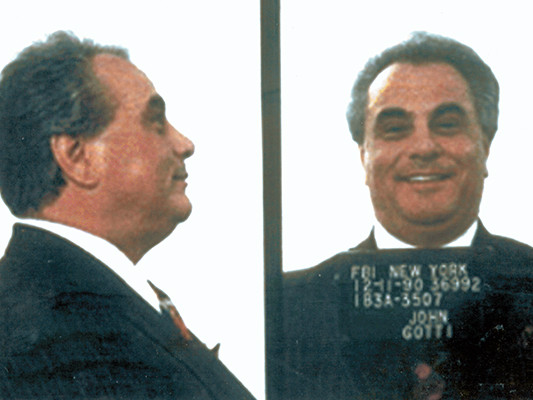 John Gotti, famously known as the Teflon Don, in a photograph highlighting his dapper style and public persona as the boss of the Gambino crime family.
John Gotti, famously known as the Teflon Don, in a photograph highlighting his dapper style and public persona as the boss of the Gambino crime family.
John Gotti, born on October 27, 1940, and died on June 10, 2002, remains one of the most infamous figures in the history of American organized crime. Nicknamed both “The Dapper Don” for his expensive taste in clothing and “The Teflon Don” for his ability to evade conviction in the 1980s, John Gotti rose to power as the head of the Gambino crime family, one of New York’s notorious Five Families. His reign was marked by violence, media attention, and ultimately, his dramatic downfall.
The Gambino crime family, by the time John Gotti seized control, was already a dominant force within the American Mafia. Its power and profitability had been built over decades, making it a highly coveted prize in the underworld. Gotti’s ascent to boss was characteristically brutal: he orchestrated the assassination of his predecessor, Paul Castellano, in 1985. Castellano himself had become the head of the family in 1975, appointed by the aging Carlo Gambino, who had similarly risen to the top through the murder of Albert Anastasia in 1957. This violent pattern of succession was a grim tradition within the Mafia, and John Gotti was firmly entrenched in it.
John Gotti’s motivation for killing Castellano reportedly stemmed from fear and ambition. Facing potential indictment for narcotics trafficking, Gotti believed Castellano, who opposed drug dealing within the family, would have him killed. However, Castellano’s unsanctioned murder created significant friction and resentment amongst the other Mafia families. Furthermore, John Gotti’s flamboyant lifestyle and craving for publicity, exemplified by his willingness to pose for newspaper photographs, drew criticism from within the more secretive Mafia circles.
Despite his public profile and numerous legal challenges, John Gotti initially seemed untouchable. Throughout the 1980s, he beat a series of federal charges, including assault and racketeering. These acquittals, later attributed to jury tampering and witness intimidation, earned him the moniker “The Teflon Don” from the media – nothing seemed to stick to him. However, this image of invincibility was somewhat misleading. Prior to his “Teflon Don” era, Gotti had served prison time for theft and truck hijacking, and had a long history of run-ins with the law dating back to his teenage years.
The tide began to turn for John Gotti as law enforcement agencies, including local police and the FBI, intensified their efforts against him and his associates. By 1990, many of Gotti’s high-ranking crew members were facing legal troubles. A crucial breakthrough came with the FBI’s raid on the Ravenite Social Club, a known Gotti hangout in New York. Unbeknownst to Gotti, the FBI had bugged the club, gathering substantial incriminating evidence. Among those arrested in the raid was Gotti’s trusted lieutenant, Sammy “The Bull” Gravano.
The charges against John Gotti in 1990 were extensive and severe: racketeering, five murders (including Castellano), conspiracy to murder, illegal gambling, loan sharking, bribery, obstruction of justice, and tax evasion. The wiretap evidence from the Ravenite Social Club proved devastating. It led to Gotti being denied bail and the disqualification of his lawyers, who were deemed to be part of his criminal enterprise.
Perhaps the most damaging blow to John Gotti’s defense was the betrayal of Sammy Gravano. Disillusioned and hearing himself criticized by Gotti on the FBI tapes, Gravano decided to cooperate with the authorities. In a dramatic turn of events, Gravano became a government witness and testified against John Gotti, detailing Gotti’s leadership of the Gambino family and his direct orders for murders. This time, John Gotti’s usual tactics of witness intimidation and jury tampering failed. In 1992, he was convicted and sentenced to life imprisonment. The Teflon Don had finally lost his Teflon coating, becoming, as the FBI quipped, the “Velcro Don.”
While serving his life sentence, John Gotti was diagnosed with cancer in 1998. Despite treatment, the cancer returned, and he died in a federal prison hospital in 2002. Following his imprisonment, the Gambino family began to unravel. His son, John Gotti Jr., attempted to take control but faced his own racketeering charges and imprisonment. John Gotti Jr.’s brother, Peter Gotti, briefly assumed leadership in 2002, only to be arrested and convicted of racketeering himself the following year. The era of John Gotti, the Dapper Don who ruled the Gambino crime family with an iron fist and a taste for the spotlight, had come to a definitive end.
